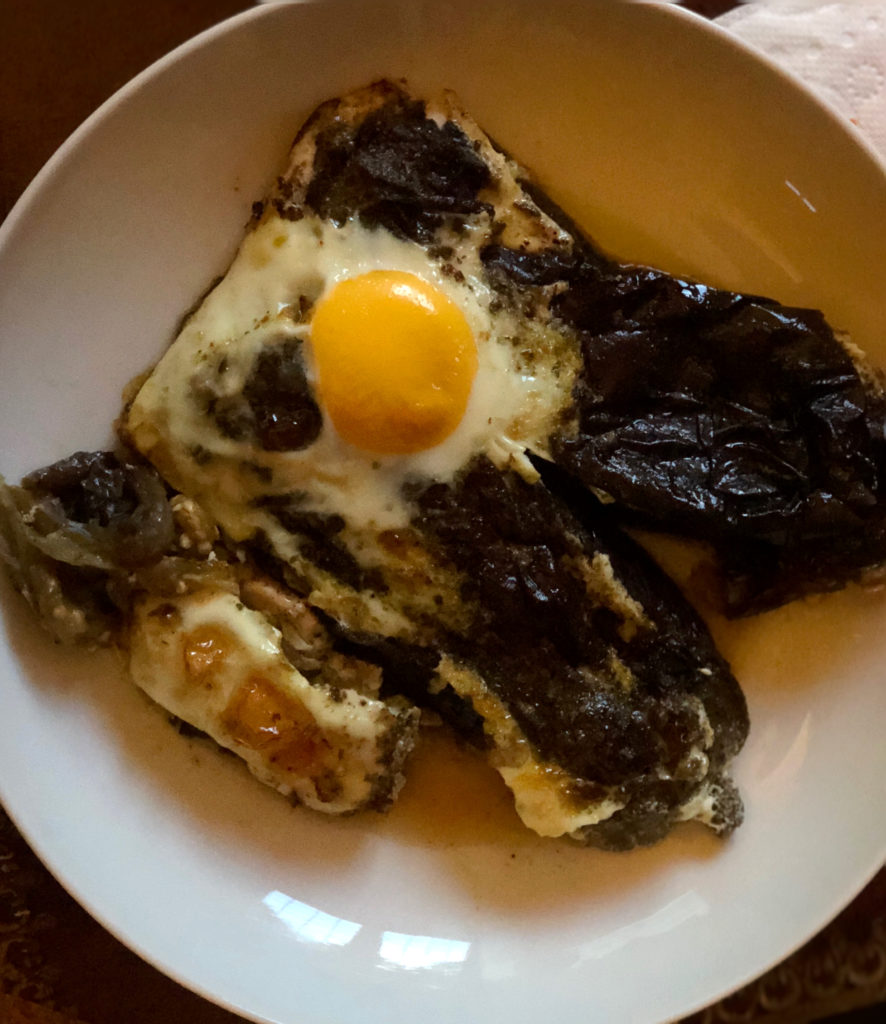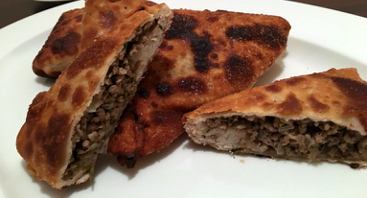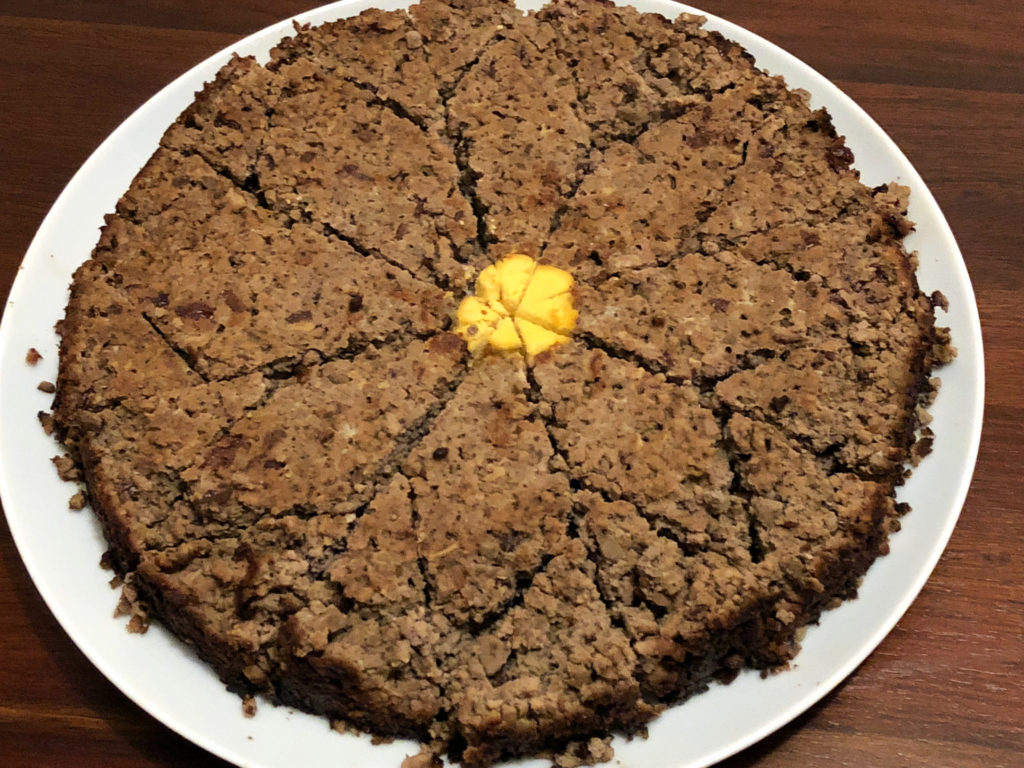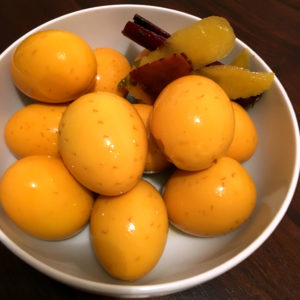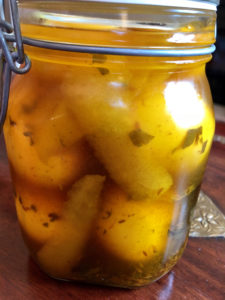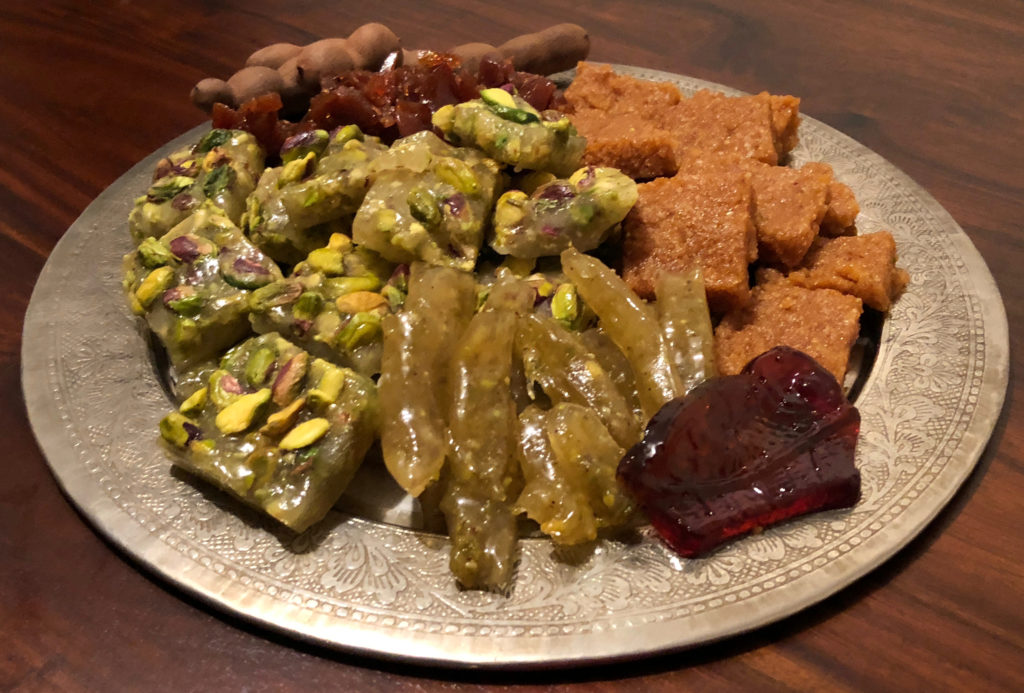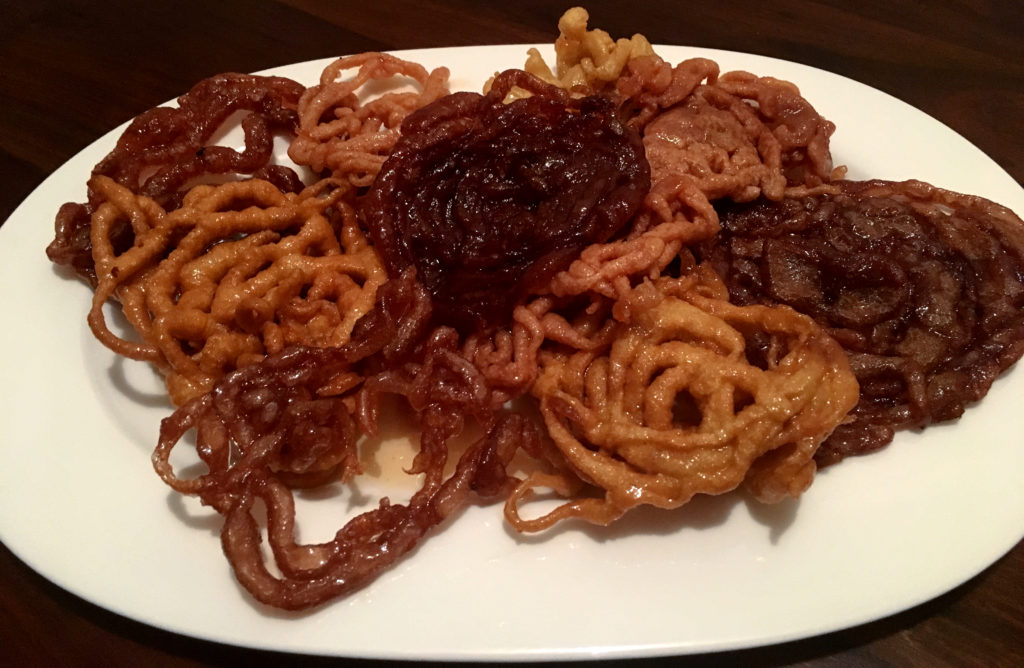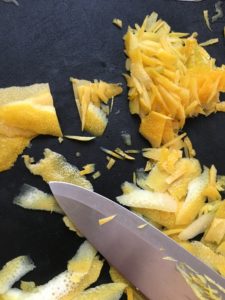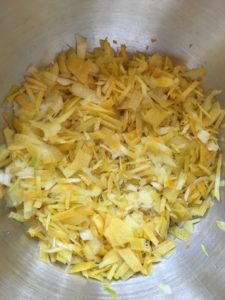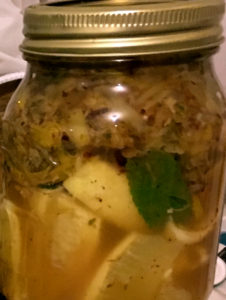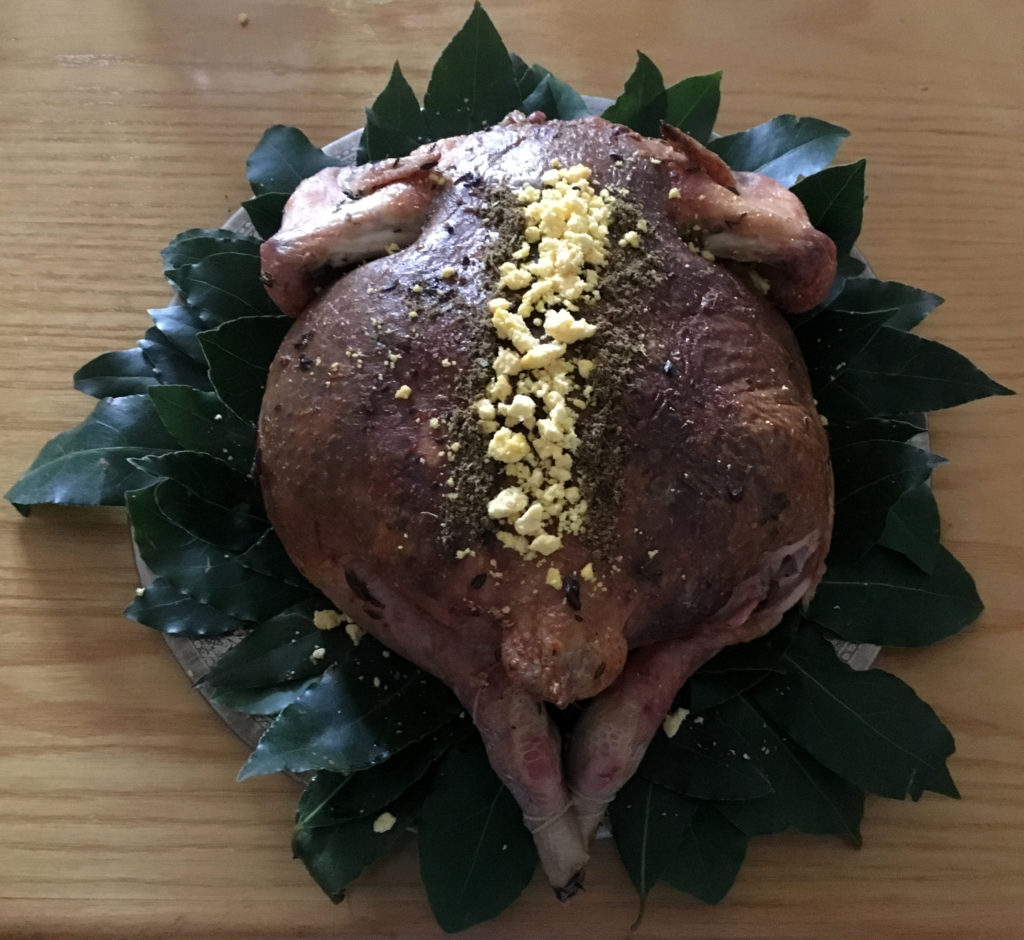Despite its name (arnab, ‘hare’), this is a vegetarian dish made with two aubergines, which are first boiled in water and salt. They are then cooked in the oven with garlic, olive oil and spices such as pepper, cumin, thyme, and saffron. You can also break some eggs into the dish before baking, which is how it was done in the recreation. [Andalusian, fol. 52v.]
